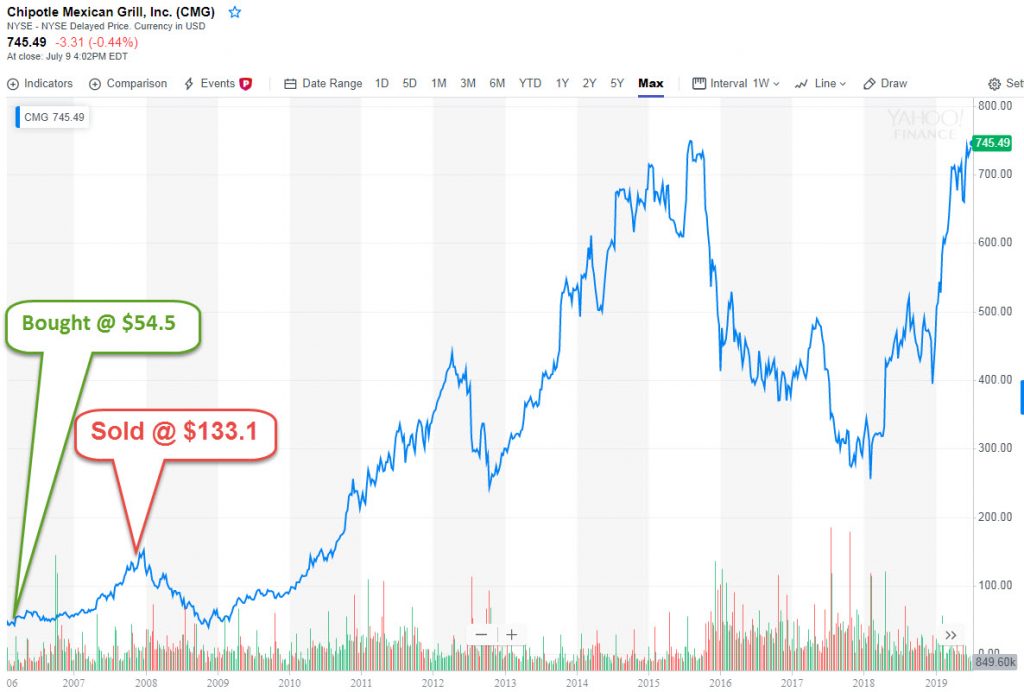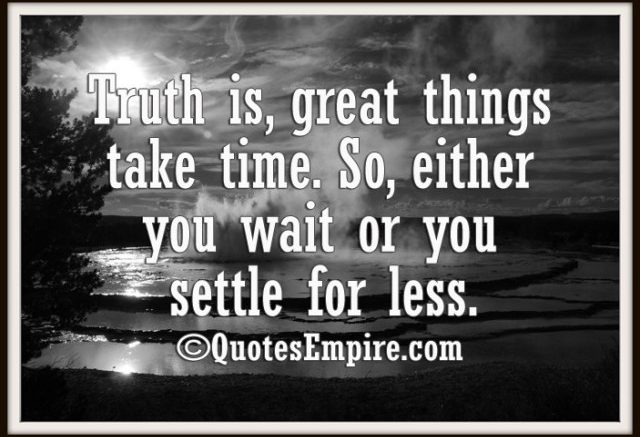Monish Pabrai, one of my favorites value investors (that I also mentioned in the Fiat-Chrysler review), once said that “You do not make money when you buy stocks. And you don’t make money when you sell stocks. You make money by waiting”. Warren Buffett has also said similar phrases during the years.
This is true. It is not enough to buy undervalued stocks and sell at the right price. To make long-term profits in stocks you must also be able to wait patiently for the stock to rise to its fair price, and Pabrai has been doing it successfully over the years.
Why wait until the stock returns to its fair price?
The underlying assumption of value investing is that every asset has a fair value. Similarly, the activity of each public company has a fair value from which it is possible to derive the right price at which its shares should be traded (this is estimated using a method called discounted cash flow valuation and everyone can learn how to do it, e.x. in our school section). So, to make a profit, you buy a stock when it trades deep below that price and then wait patiently until it corrects up to the fair price. Sometimes it takes even a few years during which you should simply nothing about your position in that share.
But, it’s hard not to do nothing…
Doing nothing is not a simple task, not only in the stock market, in general. Think about it – when was the last time you sat on the balcony or at the beach without doing anything? You did not surf the web with your cell phone or talked to a friend or read a book; just thought and stared at the sky. Apparently, this has not happened to you recently…
Why? Because our nature as human beings leads us to constantly carry out actions to achieve goals. This is also the case in the stock market, especially in periods when we see our portfolio lagging behind the indices. And then, many investors tend to carry out more frequent, unnecessary trading orders that lead them to lose a percentage of return on stocks they hold and buy securities they would not buy if they could sit without doing anything.
It’s very similar to a marathon. The right way to run a marathon is at a relatively constant pace, which on the one hand will lead you to finish at the optimum time and on the other hand, will not exhaust you at any point on the way. It’s not simple to implement, because on the way one of the runners could suddenly give a sprint and bypasses you. An inexperienced runner would increase his speed in order to beat this sprinter immediately. The thing is, that sooner or later the sprinter will get tired because of his too fast pace, and then he’ll break and you, running at your own constant pace, will overtake him and win the race.
Exactly the same thing will happen in the stock market. The indices have been “running” too fast in recent years, yielding a significantly higher return than their average annual return (around 7% -8% a year), which causes them to beat our return in the short-term. But in the future, as they have always done in the past, they will “get tired” and return to their average annual return, and then the cheap value stocks we hold will lead us to beat them and achieve an excess return. Only investors that hold their stocks patiently will succeed to beat the market. In other words, it’s boring not to do anything in our portfolio, but this is the only way to succeed in long-term investments.
Another challenge – dealing with volatility
As you probably experienced over the years, from the moment of purchase until the moment of sale, each share rises and falls, sometimes sharply, and one has to learn to overcome this volatility without being stressed out. Even in this aspect, it is not easy to sit still without doing anything when you see this roller coaster.
When stocks fall, some investors panic and sell. This is obviously a mistake. If a share is worth $1, then it’s cheap when it’s trading at 50 cents. If it dropped by 50% and is now trading at 25 cents, not only is it much cheaper, but the investment risk is also much lower now. Therefore, if nothing has changed in the company’s business activity and the share is still worth $1, in our opinion, of course, there is no logic to sell after the price falls. On the contrary, sometimes it would be wise to buy more units from it at the price at which it is currently traded.
The same is true for the case where the price increase. For many investors, it is difficult to keep a share after it has risen significantly. They fear that after the rise will reach a parallel decline and are afraid to lose money. Therefore, they are selling the position too soon. Again, if the stock is still traded below its fair price, even if it has risen sharply since the buy, there is no logic to sell now.
It’s not simple to implement, and I had a number of cases in the past in which I sold a stock ahead of time. Sometimes it was justified, for example, because the valuation was too high or because I found a more attractive investment, but sometimes I just had to keep holding as much as possible to maximize the return of the stock.
One of the best examples is the chicken-burrito maker Chipotle Mexican Grill (CMG), which I bought shortly after the separation from the parent company, McDonald’s, on March 24, 2006, at a price of $54.5 and sold a year and a half later at $133.1, i.e. at a profit of 144%. Absolutely impressive return and nice timing, just before the beginning of the 2008 crash it was more luck than brain…), but if I kept holding the stock patiently I could sell it 10 years later at 10 times that price!

So why did I sell? At the time, the share was really trading at relatively high multipliers, but if I had weighed less conservatively the company’s significant growth potential down the road, I would have concluded that it would be better not to do anything and keep holding the share. On the way, I would have seen it drop sharply in the 2008 crisis, but then it would correct and compensate for it big time.
Of course, in this case, it is looking at the back mirror, but it is possible to learn from it an important lesson about the patience required sometimes to hold shares over the years in order to maximize their returns.
Bottom line: A patient holding of stocks improves our portfolio return
Currently, there are two types of shares in the portfolio: value stocks – those traded below their fair value, such as FCAU, CEIX, HRI, etc., together with growth stocks such as Cone, EBIX, etc., whose main expected value appreciation will come from their growth.
In the first case, there is no doubt – they are traded cheaply and therefore there is no problem in justifying their continued holding. In the second case, it is more difficult for value investors based on pricing only to hold them over time. Consider CONE, which is traded at an EV/EBITDA of 22.1. It’s true that all of the sector’s shares are traded at a similar valuation, but it’s still higher than the multipliers of value stocks I usually hold. However, taking into account the company’s near-infinite potential for growth, mainly because of the huge increase in the volume of data that the cloud companies will store in the future, we understand that CONE will be able to continue to increase the value per share significantly, and this will support a rise in the share price.
In other words, in all of these cases, I think we should just do nothing and keep them in the portfolio patiently. This is an efficient and smart way to help us maximize the return of the stocks in our portfolio.


Be the first to comment on "Our portfolio grows when we do nothing"